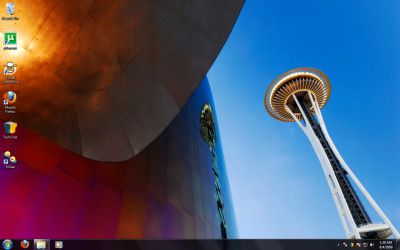From our front-page news:
Last month, we posted about Microsoft's Anytime Upgrade and Family Pack pricing for Windows 7, and it looks like the latter is kicking off right now, in pre-order form. It's not yet available on Amazon.com, but both eCOST.com and Provantage have them listed - both for a price lower than we reported about before. eCOST's price is about $147, while Provantage's is $140. The latter is also a Microsoft Gold Certified Partner, so you can be confident about ordering it there.
As a refresher, the Windows 7 Family Pack is suited for those who already have a copy of Windows installed on their PC, up to three. For Windows Vista, the upgrade path is simple, as long as the editions and architecture match. If you're running XP, you can still upgrade, but it will have to be via a clean install (which I'd opt for - who doesn't love a clean machine?).
At $150, the cost per copy is $50, which is a relative steal given that a single upgrade copy of Home Premium sells for $120. Essentially, you're getting two extra copies for $15 each. The downside, is that these copies are supposed to be limited, so if you want to hook yourself up, you shouldn't waste anytime at all. If you missed the original half-price sale, don't make the same mistake twice!
Windows 7 is still set to be released on October 22, and I'd estimate that into the new year, we'll convert all of our test machines over to it from Vista, unless some good reason creeps up to stop us. Because Windows 7 supports TRIM, we're likely to begin using the OS well before the official release for our SSD content, since unfortunately, Microsoft is not planning to support TRIM in any previous OS, including Vista.
<table border="0" align="center"> <tbody> <tr> <td>
Credit: madstork91</td> </tr> </tbody> </table>
Microsoft originally said Family Pack would only be available in North America. However, earlier this week the company extended its release to eight countries in Europe -- U.K., Ireland, Germany, France, Switzerland, Austria, the Netherlands and Sweden -- because of its decision to release Windows 7 with Internet Explorer 8 installed in those countries.
Source: Yahoo! Tech
As a refresher, the Windows 7 Family Pack is suited for those who already have a copy of Windows installed on their PC, up to three. For Windows Vista, the upgrade path is simple, as long as the editions and architecture match. If you're running XP, you can still upgrade, but it will have to be via a clean install (which I'd opt for - who doesn't love a clean machine?).
At $150, the cost per copy is $50, which is a relative steal given that a single upgrade copy of Home Premium sells for $120. Essentially, you're getting two extra copies for $15 each. The downside, is that these copies are supposed to be limited, so if you want to hook yourself up, you shouldn't waste anytime at all. If you missed the original half-price sale, don't make the same mistake twice!
Windows 7 is still set to be released on October 22, and I'd estimate that into the new year, we'll convert all of our test machines over to it from Vista, unless some good reason creeps up to stop us. Because Windows 7 supports TRIM, we're likely to begin using the OS well before the official release for our SSD content, since unfortunately, Microsoft is not planning to support TRIM in any previous OS, including Vista.
<table border="0" align="center"> <tbody> <tr> <td>

Credit: madstork91</td> </tr> </tbody> </table>
Microsoft originally said Family Pack would only be available in North America. However, earlier this week the company extended its release to eight countries in Europe -- U.K., Ireland, Germany, France, Switzerland, Austria, the Netherlands and Sweden -- because of its decision to release Windows 7 with Internet Explorer 8 installed in those countries.
Source: Yahoo! Tech
